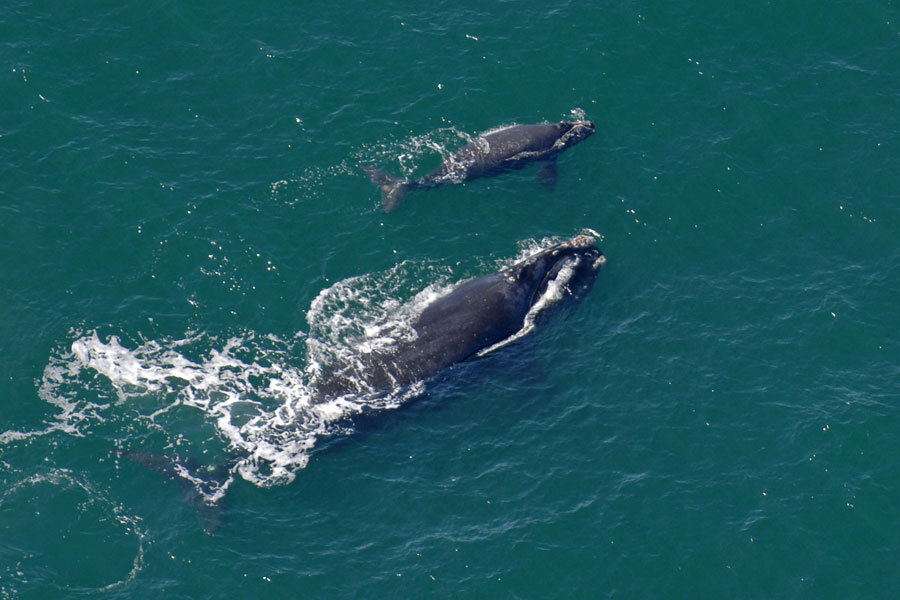Feds set aside more habitat for right whales. But is it enough?
Loading...
The endangered North Atlantic right whale will get a larger government-protected habitat the National Oceanic and Atmospheric Administration (NOAA) announced Tuesday.
The NOAA Marine Fisheries Service designated an additional 39,414 square miles of ocean as critical habitat for the endangered right whale, about the size of the state of Kentucky.
“With fewer than 500 individuals left in the wild, every whale is vital to the species’ survival and recovery,” Defenders of Wildlife senior staff attorney Jane Davenport said in a press release. “This critical habitat expansion is an investment in the future of this unique whale.”
Under the Endangered Species Act, critical habitat is defined as a range of areas that contain “physical or biological features essential to the conservation of the species.” The total protected area is divided between the whales’ northeast feeding areas in the Gulf of Maine and the whales’ southeast calving grounds between North Carolina and Florida.
“We’re making significant progress in reversing the population decline of the species, and are seeing signs of recovery – up to about 500 animals from the estimated 300 in 1994,” Eileen Sobeck, assistant NOAA administrator for NOAA Fisheries, said in a press release. “But we still have a long way to get to complete recovery.”
While these are two critical habitats for the right whale, experts say NOAA didn’t go far enough: the whales don’t have a safe way to move between the two habitats.
“Right whales are at an extinction crossroads right now – entanglement in fishing gear, shipping and offshore oil drilling in the Atlantic pose serious risks to their survival,” Sarah Uhlemann, a senior attorney at the Center for Biological Diversity, says in a press release. “The new rule takes critical steps by protecting the whale’s northern feeding areas and southern calving rounds, but unfortunately it ignores the whale’s migratory route between the two areas.”
Regina Asmutis-Silvia, the executive director of the Whale and Dolphin Conservation, says NOAA also needs to federally protect a migratory corridor.
“We should be safe when we commute between work and home, and right whales should be safe during their commute between their feeding and calving grounds,” she said.
The North Atlantic right whales experienced their first population devastation from commercial whaling in the 17th and 18th centuries. The species earned its name because whalers referred to them as the “right” whales to hunt because they were slow swimmers, floated after being killed, and contained a lot of the oil coveted by the hunters.
Although the right whale has been under federal protection since being listed as endangered in 1970, the species still struggles today. The most common human threats include ship strikes, man-made noise from underwater oil exploration, and entanglement in fishing gear.
“With only 115 adult females remaining, the loss of even one – which could potentially give birth to a calf every three years over a life span of 70 years or longer – can be a blow to recovery,” The Christian Science Monitor’s Doug Struck wrote in 2014.
The new designation does not include any new restrictions for fishermen or the public. However, federal agencies will have to consult with the NOAA before permitting any activities in the area.
The rule was proposed in February of last year and went through a general comment period before recognized by the NOAA.








